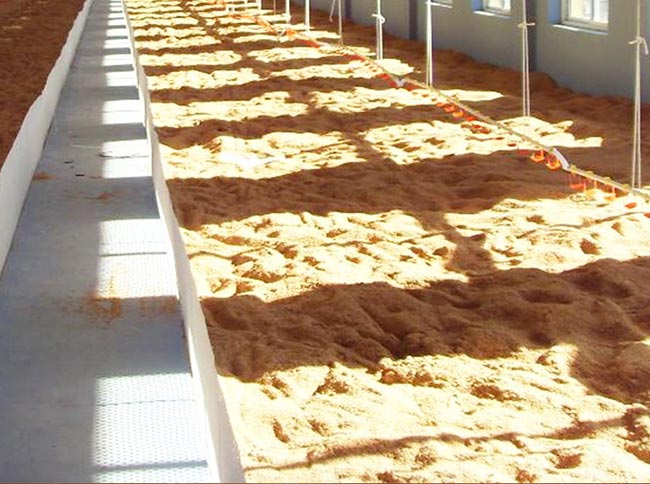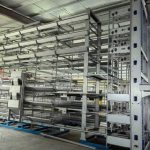The dejecta cleaning process of the farm is an important part of the farm design process, and is one of the key factors that determine whether the farm can operate normally. Below is an introduction to the common manure cleaning processes in aquaculture farms, and an analysis of the advantages and disadvantages of various types of manure cleaning processes.
At present, the fecal cleaning process in aquaculture farms can be divided into five types: manual dry fecal cleaning, water flushing feces, water soaking feces, mechanical scraping feces, and fermentation beds.
1. Artificial manure cleaning
Using manual collection of feces, there are various methods such as manual cleaning and transportation on solid ground, manual outdoor cleaning by raising livestock farms, and livestock toilets. It is still widely used in small and medium-sized farms.
The dry fecal cleaning process is a method of separating and treating livestock feces and urine after they are discharged. Dry feces are collected, cleaned, and transported by machinery or manual labor, while urine flows out of the urination ditch and is then treated separately. It is currently a type of fecal cleaning process advocated by livestock farms.
Advantages:
In accordance with environmental policy requirements, feces can be diverted as soon as they are generated, which can keep the house clean and odorless. There are few sewage sites generated, and the concentration is low. Easy to purify and treat, greatly reducing the generation and discharge of wastewater, as well as the pollution load of wastewater. The dry manure is separated directly, with low nutrient loss and high fertilizer value. After proper stacking, the bio active Manure can be produced. The implementation of dry cleaning of feces, separation of feces and water, and separate treatment is a cost-effective solution to improve treatment efficiency. It is also an important measure to reduce serious environmental pollution caused by livestock production.
Disadvantages:
Artificial labor intensity is high, labor production efficiency is low, and a large amount of labor resources are required. In areas with relatively scarce labor resources, dry and clean manure should not be used.
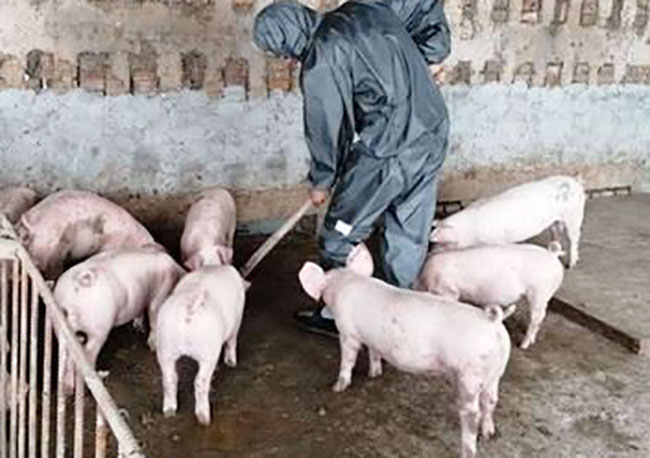
2. Water flushing feces
Flush the fecal ditch with water to remove the fecal waste from the drainage channel. Previously, small and medium-sized aquaculture farms used this process, but now it is rarely used due to the large amount of water used for flushing feces, which does not meet environmental requirements.
Advantages:
Flushing the manure ditch with water requires less manpower and relatively less labor, saving labor costs for the breeding farm.
Disadvantages:
This method of cleaning feces consumes a large amount of water, wastes water sources, and does not comply with environmental policy requirements.
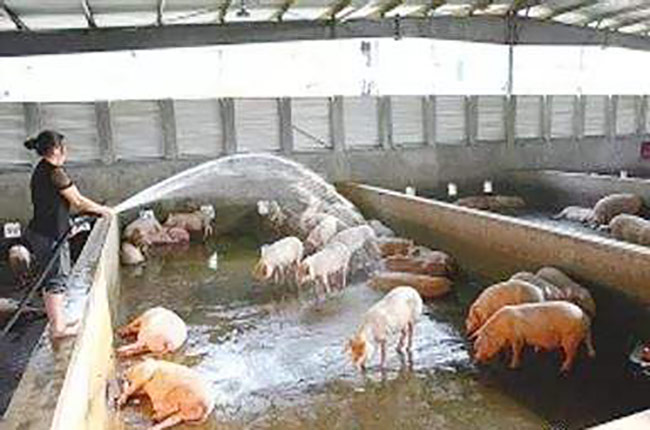
3. Vesicular excrement
Bubble feces refer to the process of injecting a certain amount of water into the drainage ditch in the livestock shed, and discharging feces, urine, flushing, and feeding management water into the ditch under the leaking floor. The storage time is until the ditch is filled, and the outlet is opened to discharge the fecal water from the ditch. The forms of blistered feces can be divided into the following:
- Deep pit manure storage
The breeding farm adopts the form of deep pit storage of feces, with the fecal ditch designed to be 2-3 meters deep. The feces are stored in the ditch and pumped 1-2 times a year. Deep pit manure storage farms, due to the long-term storage of feces in the house, produce harmful gases after fermentation, making it difficult to control the air quality inside the house and prone to accidents. Currently, it is less recommended to use deep pit manure storage methods. - Shallow pit plug removal
The design depth of trenches for shallow pit plugging is generally between 60 to 90 centimeters, and the layout of trenches is diverse.
The design of shallow pit water soaking dung generally involves placing the fecal plug at the end and using a flat bottom trench. The fecal plugs are set at one or both ends, and the length of the trench is generally less than 18m. There are also forms of card type trenches, where the fecal plugs of both trenches are set at one end and the other end of the two trenches is connected. In general, setting fecal plugs or card type trenches at both ends is better than setting them at one end. During operation, pulling the fecal plug at one end this time and pulling the fecal plug at the other end the next time can avoid fecal deposition at one end.
For farms such as public farms and breeding and pregnancy farms that do not require emptying and do not have a need for trench flushing, using a two end unplugged or hairpin style trench is a good choice, while delivery houses, nursing houses, and fattening houses need to be regularly emptied. For farms that flush the trench, even flat bottomed trenches will have residual feces after unplugging, which is inconvenient to flush, especially in delivery and nursing houses where the frequency of trench flushing is high, Improving the flushing efficiency of trenches is crucial. When designing the trench of the delivery and nursing homes, a sloping approach will be used to improve flushing efficiency.

Advantages:
A reasonably designed shallow pit with a water bubble for removing feces has good air quality, less manual labor, and relatively low investment and operation costs, making it a relatively reasonable method for cleaning feces in aquaculture farms.
It can maintain a clean environment in the farm, which is beneficial for the health of livestock, with low labor intensity and high labor efficiency, and is beneficial for the health of farm workers. It is more suitable in areas where labor is scarce. The process technology is not complex and is not affected by climate change.
Disadvantages:
At present, the relevant regulations of the environmental protection department clearly indicate that new, renovated, and expanded livestock and poultry farms should adopt dry manure cleaning technology. The existing aquaculture farms that use water flushing and water soaking processes for fecal cleaning should gradually switch to dry fecal cleaning.
The water consumption is high, and the aquaculture farm needs to consume a large amount of water every day; High concentration of pollutants; The separated solid nutrients have low content and low fertilizer value. The infrastructure investment and power consumption in the sewage treatment section are relatively high.
4. Mechanical scraping of feces
Due to the limitations of the use of water soaked manure technology in many regions and the inability to pass environmental impact assessments, recent large-scale aquaculture projects have increasingly begun to consider using mechanical scraping of manure.
Mechanical fecal scraping is a method of using an electric driven fecal scraping plate to clear the trench multiple times a day. In terms of form, it can be divided into two types: flat scraper and V-shaped scraper. The flat scraper has a relatively simple process, where feces and urine are scraped out of the house together. However, there is no dry wet separation achieved inside the house, and subsequent dry wet separation equipment needs to be added. Due to the small slope of the trench, urine is prone to volatilization and the relative air quality is poor. At present, the mechanical scraping equipment within the company is mainly V-shaped scraper.
The V-shaped scraper can achieve wet and dry separation inside the house, and urine can be discharged quickly using a slope with relatively small volatilization. However, compared to the flat scraper, the construction accuracy requirement is high. If the accuracy of the fecal canal bottom is not ideal, it will affect the subsequent fecal scraping effect and increase the failure rate.
Therefore, farms that use mechanical scraper boards, especially V-shaped scraper boards, should pay attention to the construction quality control of the trench. Concrete prefabricated components can be used to improve the accuracy of the trench bottom.
The airtightness of the farm is also an important part, which can be achieved by using a cover plate at the end of the manure scraper. When the manure is scraped out, the cover plate is opened and automatically covered to ensure the airtightness of the farm.
Also, equipment such as motors and pulleys that require daily maintenance should be located outside the building or in a location that is easy for personnel to operate, in order to reduce the difficulty of maintenance.
Advantages:
Requirements for environmental protection policies and subsequent fecal wastewater treatment processes. A well functioning fecal scraper has a certain effect on the quality control of the building.
Disadvantages:
The investment in scraping boards is relatively high, and the operation and maintenance costs are high. Many farms that use scraping boards have problems with winter ventilation. If the airtightness of the farms is damaged, the air quality is even worse than that of water soaked manure farms.

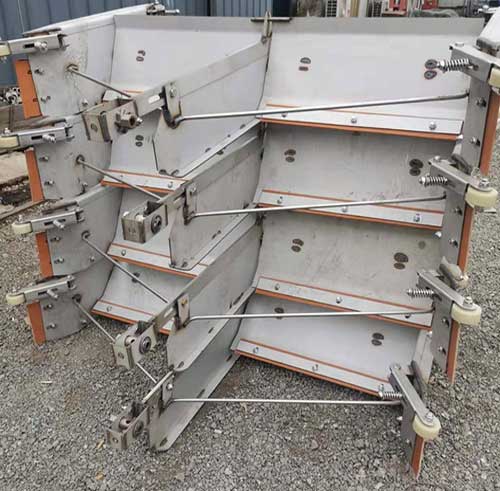
The benefits of a manure removal system in aquaculture farms
- From the perspective of economic benefits, the installation of the manure removal system can save a lot of labor, achieve modern and mechanized production, and save a considerable amount of expenses for the breeding farm.
- From the perspective of environmental benefits, reasonable setting of pen size and facilities, utilizing the designated excretion behavior of pigs, and achieving clean fecal clearance; The automatic control system regularly and timely scrapes feces, reducing the amount of water used for flushing, water consumption, and sewage discharge, achieving solid-liquid separation of feces and sewage, and reducing the concentration of major pollutants in sewage; Timely cleaning of feces improves the growing environment for pigs, reduces the pressure on disease prevention and control within the pen, and at the same time, the fecal cleaning system is equipped in a separate building to avoid the potential risk of disease transmission caused by the mixed use of fecal cleaning tools.
5、 Fermentation bed
By utilizing microbial fermentation control technology, microorganisms are mixed in proportion with sawdust, husks, or straw, and fermented at high temperature to form a fermentation bed using organic matter as a substrate. Livestock feces and urine are discharged onto the fermentation bed, where they are promptly decomposed and digested by the substrate microorganisms, achieving zero discharge of feces, urine, and sewage.
Advantages:
No need to flush the aquaculture farm, saving water resources; Discharging fecal and urine free sewage outward, achieving clean production without discharge and odor, effectively protecting the breeding and ecological environment, and benefiting the health of breeders and pigs; Reduced labor volume and saved labor.
Disadvantages:
The breeding area of livestock is large, increasing the area of the farm area; Further research is needed on the sources and substitutes of bacterial strains and bedding materials; Summer bedding generates heat and has a high temperature, which is not conducive to the health of livestock.
